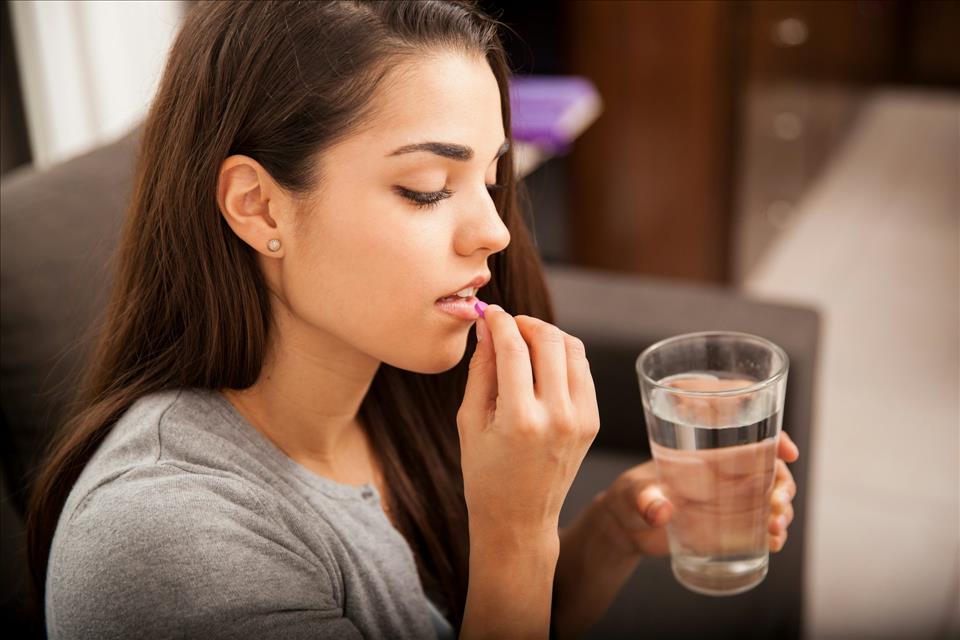PMDD: Social Media Users Claim Antihistamines Help Symptoms Here's What The Evidence Says
Premenstrual dysphoric disorder is a long-term condition which causes severe psychological distress in the week or two before a woman's period begins. PMDD symptoms can be varied and vast – with physical symptoms ranging from difficulty sleeping, migraines, bloating and breast tenderness. Psychological symptoms include rage, anger, anxiety, low mood and feeling overwhelmed.
All of these symptoms can have a severe impact on a woman's social, home and work life. Women with PMDD are seven times more likely to attempt suicide due to the mood symptoms they suffer with making them more vulnerable.
PMDD affects 3-8% of the population but is still widely under-recognised and undiagnosed . Some women have to wait years before getting a diagnosis .
It's not fully known what causes PMDD. It's thought to be due to many factors.
One theory is that the condition occurs due to variations in genes that activate hormones and their receptors. Other theories suggest the brain's emotional circuits (limbic system), which are densely populated with hormone receptors, react differently in those with PMDD.
For example, a widespread theory posits that when oestrogen fluctuates up and down in the two weeks before a woman's period, this has a negative impact on serotonin (the so-called happy hormone). If this is true, it would explain why selective serotonin reuptake inhibitor (SSRI) antidepressants can be effective for some women as these drugs aim to increase serotonin levels.
Read more: Premenstrual dysphoric disorder: the frightening psychological condition suffered by Dixie D'Amelio
Another theory relates to faults in the progesterone pathway and its breakdown product called allopregnenalone (a steroid). Allopregnenalone normally stimulates a calming chemical called GABA in the brain, which acts as a natural anti-anxiety substance.
Fluctuations and altered sensitivity of allopregnenalone on the GABA system is thought to be why some women suffer with PMDD. This can explain why some women typically have no symptoms of PMDD during pregnancy due to the lack of fluctuation in the hormone progesterone.
Histamine link?Some women online are now claiming that high histamine levels may also be the cause of PMDD symptoms – and that taking over-the-counter drugs which block the effects of histamines has helped to alleviate their symptoms .
Histamine is a chemical the body naturally produces which plays a role in allergies, digestion, inflammation, brain function and hormone balance.
There is currently no evidence that antihistamines can help with PMDD symptoms. MDV Edwards/ Shutterstock
There is currently no published research which has investigated the link between PMDD symptoms and histamine levels. However, we do know from other areas of research that histamine activity varies throughout the menstrual cycle.
One study found that in the two weeks before a period, immune cells called mast cells, which release histamine, are more likely to be activated due to oestrogen levels being high. It's suggested that these changing oestrogen levels – which cause high histamine – may explain why PMDD symptoms occur. If this theory is true, it would also explain why antihistamines would help with PMDD symptoms, as these drugs block the release of histamines.
There are many potential reasons why oestrogen levels may be particularly high in some women – particularly those with PMDD. This so-called oestrogen dominance may be due to many factors, such as excess toxin exposure in the environment from plastics and issues with people unable to detoxify oestrogen from the body efficiently due to poor liver and gut health . All this can potentially add to the oestrogen bucket, which has a knock-on effect on histamine levels, which can further stimulate oestrogen – leading to a vicious cycle.
But the histamine intolerance and oestrogen dominance theories are both still controversial and not fully recognised in the mainstream medical community. There are no scientific, clinical studies that exist on the topic of PMDD, oestrogen dominance and histamine as yet to show whether they are linked to PMDD or not – or whether antihistamines are effective for PMDD.
Yet, many people with PMDD are turning to antihistamines, as well as famotidine – a histamine receptor antagonist which blocks histamine production in the stomach – to reduce PMDD symptoms. Many of these women are reporting they're seeing improvement, so there may well be some validity behind these claims. However, there is no research to back the use of these drugs just yet.
Lifestyle changes – such as eating fewer inflammatory, processed foods, exercising and talking therapies (such as cognitive therapy) – have all shown small but positive benefits in people with PMDD.
Prescription drugs such as antidepressants (SSRIs) and contraceptive pills containing a synthetic progestin called drospirenone are also shown to be effective for people with PMDD. These options may be better for women in the meantime until more research in this area has been done.

Legal Disclaimer:
MENAFN provides the
information “as is” without warranty of any kind. We do not accept
any responsibility or liability for the accuracy, content, images,
videos, licenses, completeness, legality, or reliability of the information
contained in this article. If you have any complaints or copyright
issues related to this article, kindly contact the provider above.
Most popular stories
Market Research

- Global Open Banking Market 20252033: Services, Deployment & Distribution Trends
- ROVR Releases Open Dataset To Power The Future Of Spatial AI, Robotics, And Autonomous Systems
- Cartesian Launches First Outsourced Middle-Back-Office Offering For Digital Asset Funds
- Nickel Market Estimated To Exceed USD 55.5 Billion By 2033
- Edgen And Sahara AI Announce Strategic Collaboration To Pioneer Decentralized Validation In Market Intelligence
- Excellion Finance Launches MAX Yield: A Multi-Chain, Actively Managed Defi Strategy






















Comments
No comment